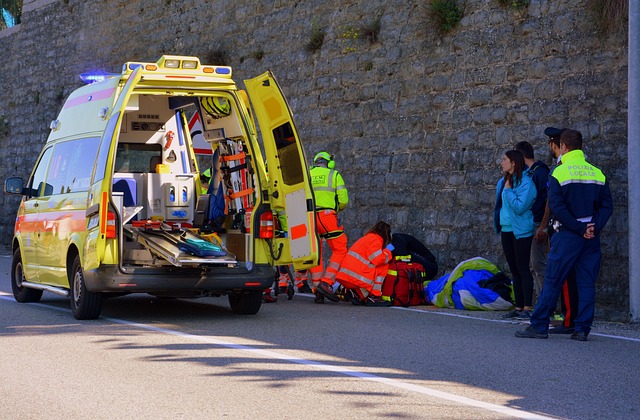Asphalt shingle removal requires safety precautions due to sharp edges and toxic fumes. Professional contractors use specialized tools for efficiency and protection. Proper preparation, including protective gear, is crucial. Shingles are stripped in sections, using tools like electric removers or utility knives, with heat guns for larger areas. Debris management involves vacuum trucks and responsible disposal of old shingles. Safety prioritization includes hazard assessment, ventilation, and protective equipment. Effective communication and planning minimize accidents during removal, adhering to industry standards for safe and sustainable roofing projects.
“Expert asphalt shingle removal is an essential yet intricate process, requiring both knowledge and specialized tools. This comprehensive guide delves into the heart of efficient shingle extraction, offering insights on understanding the composition of asphalt shingles for safe handling. We explore crucial safety precautions, from protective gear to preventing accidents.
Furthermore, it details the best tools for the job, providing a roadmap for effective step-by-step removal techniques. Learn proper debris management and discover preventive measures to ensure a secure work environment during this critical task.”
- Understanding Asphalt Shingle Composition and Safety Precautions
- Tools and Equipment Essential for Efficient Removal
- Step-by-Step Guide: Safe and Effective Shingle Stripping Techniques
- Managing Debris: Proper Collection and Disposal Methods
- Preventive Measures: Ensuring a Safe Work Environment During Removal
Understanding Asphalt Shingle Composition and Safety Precautions

Asphalt shingles are a common roofing material known for their durability and affordability. Understanding their composition is crucial when it comes to safe removal. Made from asphalt, a type of fossil fuel, these shingles are reinforced with fiberglass mats and coated with mineral granules for protection against UV rays. This blend makes them resistant to wear and tear, but proper handling during removal is essential due to potential hazards like sharp edges and toxic fumes.
Safety precautions are paramount when tackling asphalt shingle removal. Protective gear, including gloves, goggles, and a respirator mask, should be worn to shield against debris and airborne chemicals. Additionally, the process requires careful navigation to avoid falls, especially on steep roofs. Professional roofing contractors near you can provide expertise and ensure compliance with local building codes and roofing warranties for shingles, including proper disposal of removed materials.
Tools and Equipment Essential for Efficient Removal

When it comes to expert asphalt shingle removal, the right tools and equipment are paramount for efficiency and safety. Professionals rely on specialized gear designed to handle the task swiftly and effectively. One essential item is the electric shingles remover, a powerful tool that simplifies the process by quickly lifting and removing shingles without damaging the underlying structure. Additionally, a sturdy ladder tailored for roofing tasks ensures safe access to elevated areas, while safety goggles protect against debris and dust.
For thorough cleaning and preparation, a high-pressure washer is indispensable. It removes dirt, grime, and remaining adhesive, ensuring a clean slate for new installations or roof repair services. Moreover, modern roofing trends often involve innovative materials and designs that require specialized tools to accommodate their unique removal and installation processes. The ability to adapt with these advancements ensures seamless integration of residential roof replacements while adhering to contemporary standards.
Step-by-Step Guide: Safe and Effective Shingle Stripping Techniques

Removing asphalt shingles safely and effectively is a crucial step in any roofing project. Here’s a step-by-step guide designed to ensure the process is both efficient and secure, catering to both residential and commercial roofing needs. Start by gathering the necessary tools and safety equipment, including gloves, protective goggles, and a reliable ladder. Next, inspect your roof for any damage or debris that could impede the removal process, clearing the area as needed.
Begin stripping shingles from the edge of the roof, working in sections to avoid overwhelming yourself or damaging the underlying surface. Use a specialized shingle remover tool or a utility knife to carefully pry up and remove individual shingles. For larger areas, consider employing a heat gun to soften the adhesive, making removal easier. Once stripped, properly dispose of the old shingles according to local regulations, ensuring a clean and safe job site. When considering commercial roofing options, eco-friendly roofing choices, or fire-resistant roofing materials for replacement, consult with professionals who can guide you on the best products based on your specific needs and climate.
Managing Debris: Proper Collection and Disposal Methods

Effective asphalt shingle removal requires meticulous debris management to ensure a safe and efficient roofing project. After stripping off the old shingles, it’s crucial to collect and dispose of them properly. This involves using specialized equipment like vacuum trucks to minimize mess and dust. Skilled professionals understand the importance of proper collection methods, ensuring that discarded shingles are contained and transported safely to designated landfills or recycling centers.
Proper disposal is not just about environmental responsibility; it also impacts roofing project timelines and budgets. Unlike traditional long-lasting roof coverings, asphalt shingles are relatively inexpensive but require careful handling during removal to avoid unnecessary costs. By implementing efficient debris management strategies, roofing contractors can streamline shingle installation processes and potentially reduce overall shingle installation cost, contributing to a more successful and sustainable roofing project.
Preventive Measures: Ensuring a Safe Work Environment During Removal

When undertaking expert asphalt shingle removal, safety should never be overlooked. Before beginning any project, it’s crucial to assess and mitigate potential hazards in the work area. This includes ensuring adequate ventilation to prevent the accumulation of volatile organic compounds (VOCs) commonly found in asphalt, as well as proper protective equipment like gloves, goggles, and respirators to shield against sharp debris and harmful substances.
A safe work environment also involves clear communication and training for all team members. Understanding the extent of shingle damage and planning for its repair or replacement is key. Regular breaks should be scheduled to avoid fatigue, and a well-organized workspace with designated areas for tools and materials can significantly reduce accidents. Additionally, staying up-to-date with industry standards and regulations for commercial roofing options ensures that every step taken during the removal process adheres to safety protocols.
Expert asphalt shingle removal requires a comprehensive understanding of material composition, safety protocols, and efficient techniques. By adhering to the outlined steps, including proper tool selection, safe work practices, and responsible debris management, professionals can ensure a smooth and effective roofing transformation. This process not only enhances curb appeal but also provides a solid foundation for new installations, underscoring the importance of meticulous asphalt shingle removal in any renovation project.
